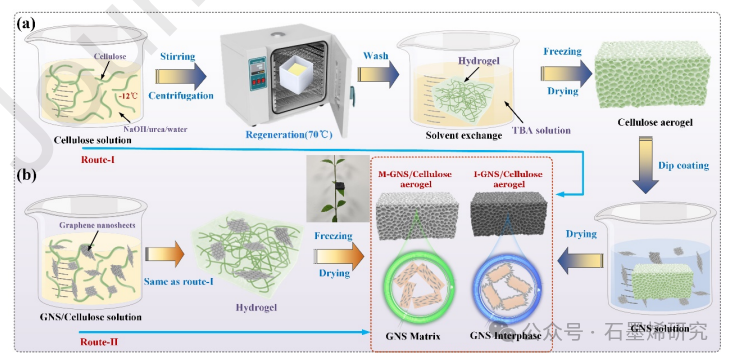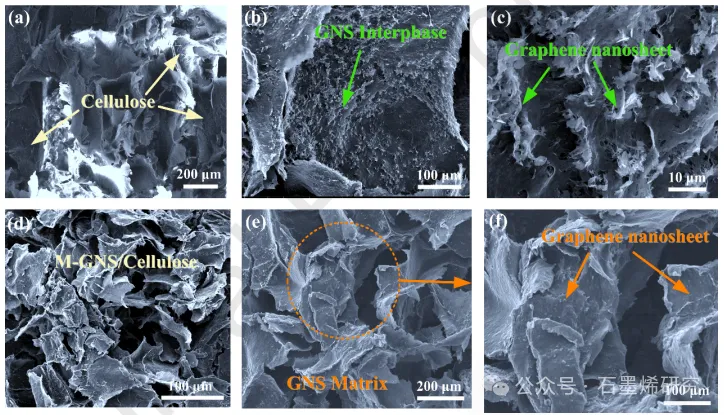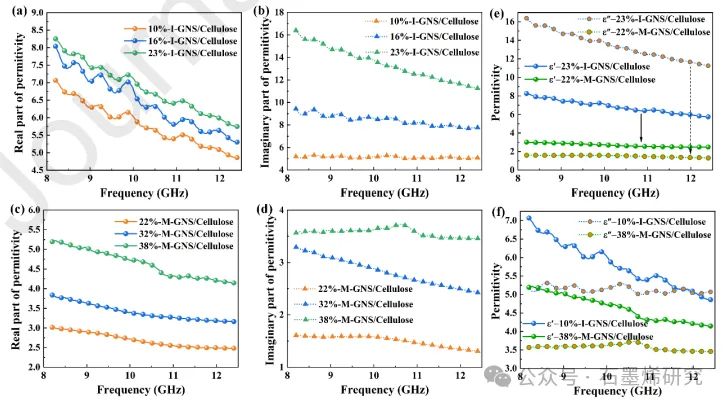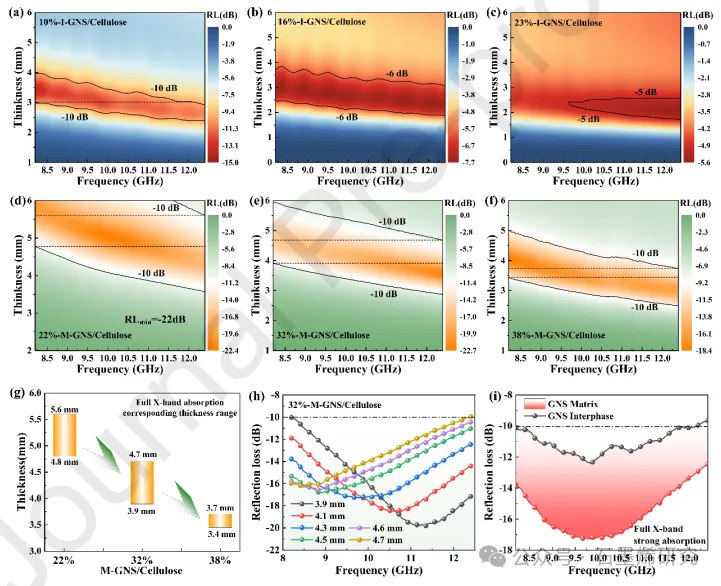Title: Facilitative Preparation of Graphene/Cellulose Aerogels with Tunable Microwave Absorption Properties for Ultra-Lightweight Applications
Keywords: Graphene, Cellulose, Aerogels, Microwave Absorption, Lightweight Materials
Northwestern Polytechnical University, Xi’an University of Posts and Telecommunications, and Xi’an University of Science and Technology have developed graphene/cellulose aerogels that exhibit tunable microwave absorption properties, suitable for ultra-lightweight applications. Graphene aerogels, as a novel carbon-based composite material, possess high electrical conductivity, adjustable structures, and excellent corrosion resistance, demonstrating significant potential in wave absorption fields.
By designing the preparation process to effectively regulate the microstructure of the graphene aerogel composites, we can precisely control their dielectric properties, which is crucial for enhancing their wave absorption performance. This study uses graphene and short fiber cellulose as raw materials and successfully fabricates two types of three-dimensional porous graphene/cellulose aerogel composites via a freeze-drying method based on a dissolution-recovery strategy.
We compared and analyzed the differences in their microstructures, dielectric properties, and corresponding electromagnetic wave absorption capabilities. The results indicate that the graphene/cellulose aerogel composite with graphene nanoplatelets incorporated into the cellulose matrix exhibits superior wave absorption performance. The composite with 32 wt% graphene achieves effective electromagnetic wave absorption across the entire X-band (8–12.4 GHz) within a relatively large thickness range (3.9–4.7 mm), with reflection loss less than −10 dB.
The density of the proposed aerogels does not exceed 0.02 g/cm³, showcasing significant potential as excellent lightweight microwave absorption materials. This study summarizes the multi-scale electromagnetic wave absorption mechanisms, providing important references for designing ultra-lightweight absorbers with broadband perfect absorption.
Figures:

- Figure 1: Preparation process of the two types of GNS/cellulose aerogels: (a) IGNS/cellulose aerogel; (b) M-GNS/cellulose aerogel.

- Figure 2: Morphology of the prepared aerogels: (a) pure cellulose aerogel; (b-c) IGNS/cellulose aerogel; (d-f) M-GNS/cellulose aerogel.

- Figure 3: Complex dielectric constants of I-GNS/CA and M-GNS/CA composites with varying GNS content: (a) real part of I-GNS/CA; (b) imaginary part of I-GNS/CA; (c) real part of M-GNS/CA; (d) imaginary part of M-GNS/CA; (e-f) comparison of I-GNS/CA and M-GNS/CA composites.

- Figure 4: Thickness-dependent RL of GNS/CA composites in the 8-12.4 GHz frequency range: (a) 10%-I-GNS/CA; (b) 16%-I-GNS/CA; (c) 23%-I-GNS/CA; (d) 22%-M-GNS/CA; (e) 32%-M-GNS/CA; (f) 38%-M-GNS/CA; (g) thickness range of MGNS/CA composites for effective absorption in the X-band (RL < -10 dB); (h) frequency-dependent RL curves for 32%-M-GNS/CA composites at different thicknesses; (i) comparison of RL curves for I-GNS/CA and M-GNS/CA composites.

- Figure 5: Schematic diagram of the electromagnetic wave absorption mechanism of the proposed GNS/CA composites.
This research, conducted by Xiaomeng Fan from Northwestern Polytechnical University, Qian Zhou from Xi’an University of Posts and Telecommunications, and Lifei Du from Xi’an University of Science and Technology, was published in the Journal of Colloid and Interface Science in 2024.
Original Article Link: Facilitative preparation of graphene/cellulose aerogels with tunable microwave absorption properties for ultra-lightweight applications

